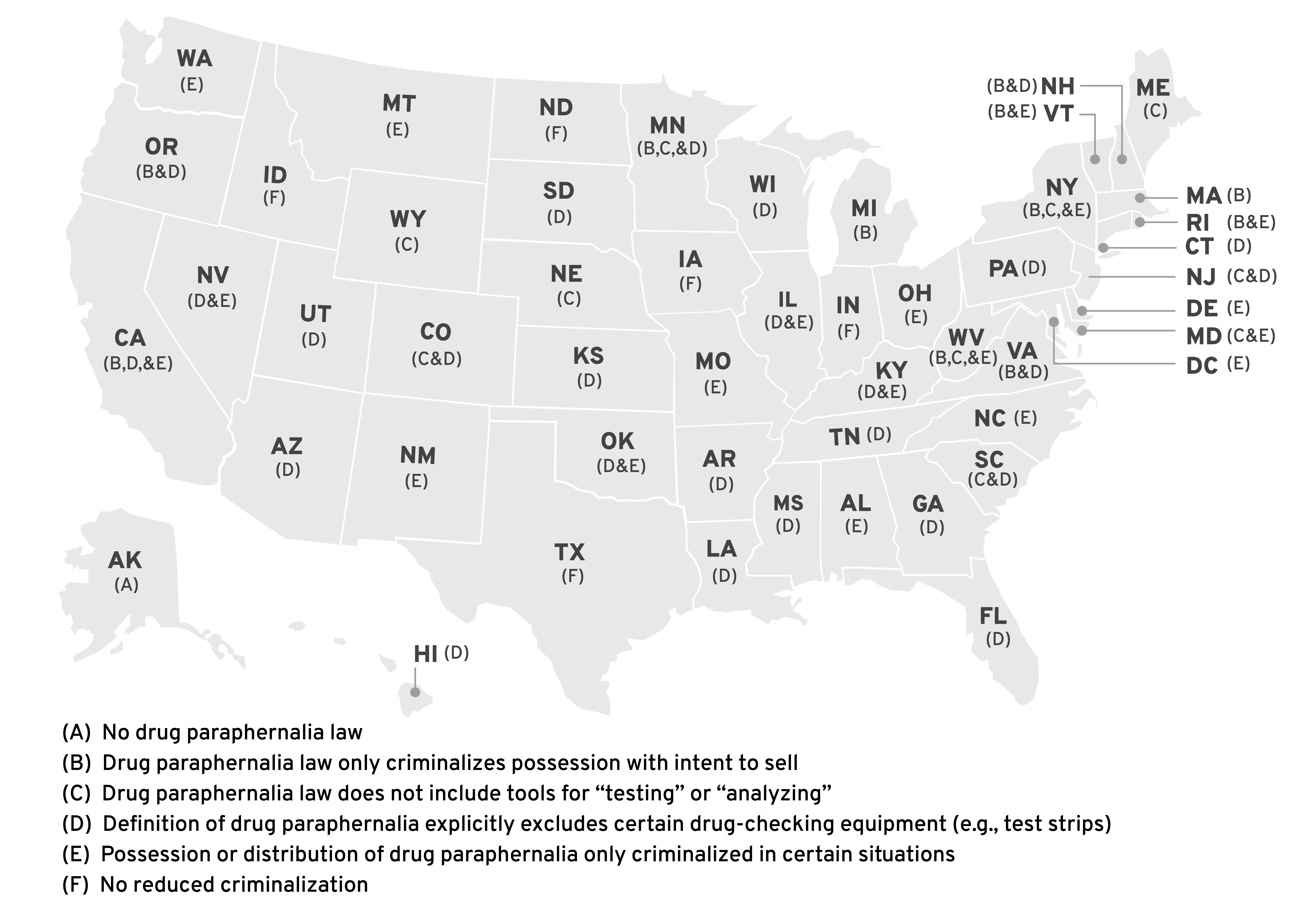The Lifesaving Power of Drug Checking
Author
Key Points
Media Contact
For general and media inquiries and to book our experts, please contact: pr@rstreet.org
Introduction
Roughly 100,000 people in the United States die each year of a drug overdose—most involving the potent synthetic opioid fentanyl. Drug checking can save lives in the face of an opaque and unstable drug supply by testing for potential contaminants. This knowledge, in turn, may encourage behavior changes that reduce overdose risk and support healthier drug use. However, many states prohibit some (if not all) drug checking. Amending state laws to explicitly authorize the possession, distribution, and use of equipment to check for a range of adulterants is a critical step in combating the overdose crisis.
Does drug checking keep people safer?
Drug checking empowers some people who use drugs to consume them more safely and take steps to reduce overdose risk. Some even report they would get rid of their supply altogether if testing revealed it contained fentanyl or another contaminant.
Common tools and services
“Drug checking” refers to a variety of tools and services that allow individuals or organizations to test a small amount of a substance to identify its contents. The two most common approaches to drug checking for harm reduction purposes are individual and community-based.
Individual drug checking
Individual drug checking puts the tools directly in the hands of people who use drugs. Using lateral flow immunoassays, commonly known as test strips, individuals mix a small portion of their supply with water and saturate the strip to identify trace amounts of potential contaminants. Affordable, convenient, and easy to use, the strips look and work much like home pregnancy tests. But while they are highly reliable, most only test for a single substance or class of substances.
Depending on the community, these test strips may be available from pharmacies, harm reduction organizations, and public health agencies.
Community-based drug checking
Point-of-service drug checking allows people who use drugs to bring their supply (or a portion of it) to a harm reduction program or other community organization for testing. These organizations may rely on test strips, although the preferred method—when legal and available—is to use technologies like Fourier-transform infrared spectroscopy (FTIR) that test for a variety of substances, making them ideal for rapidly changing drug markets. Regardless of the technology used, another benefit of community-based drug checking is that organizations can see and share emerging trends in the drug supply and give participants the information and tools to stay safer.
The case for broad drug-checking laws
U.S. drug-checking laws often leave drug-checking equipment in a legal gray area without protections for the individuals or organizations that possess or distribute them. For example, some states prohibit the possession of drug-checking equipment, but only with intent to sell. Furthermore, some states have taken steps to exclude only equipment that tests for specific substances, such as fentanyl.
State policies that reduce criminalization of drug-checking equipment

Source: Legislative Analysis and Public Policy Organization
Unfortunately, implied legality does not guarantee protection from criminalization—and policies that only extend protections to certain equipment, substances, or circumstances prevent on-the-ground organizations from adapting quickly to a changing drug supply. Expanding explicit authorizations to include the full spectrum of drug-checking tools, practices, and services is an important part of comprehensive, lifesaving harm reduction strategies.
Roughly three quarters of overdose deaths in the United States are attributable to synthetic opioids like fentanyl. However, we are currently in the “fourth wave” of the overdose epidemic, complicated by the emergence of novel adulterants like xylazine, nitazenes, and illicit benzodiazepines; a rise in stimulant-involved overdoses; and an increase in intentional and unintentional polydrug use. These changes in supply and drug use behavior increase the need for drug checking, especially for technologies that can test for a variety of substances—some of which might not be suspected adulterants.
For example, once fentanyl becomes common in illicit drug markets, people may assume that their supply is contaminated (or perhaps taken over) by the potent synthetic opioid and be less likely to rely on fentanyl test strips. And while test strips are well suited to markets in which people suspect the rise of a particular adulterant, they are less relevant when unknown or varied substances contaminate the supply.
Additionally, technologies intended for use by individuals require the person to find a private space and take the extra time to check their drugs. This presents a substantial barrier to testing for individuals experiencing homelessness or precarious housing, as these conditions may not be feasible.
Policy responses to the overdose crisis must reflect local needs and the changing illicit drug supply. Authorizing drug checking in general rather than focusing on a specific tool (e.g., test strips) or substance (e.g., fentanyl) can help achieve this balance. Broad drug-checking language allows individuals, public health, and community organizations to target their harm reduction interventions to participants and to adapt in real time using the latest evidence-based technologies. It also reduces the number of times legislators must return to the issue to adjust laws.
